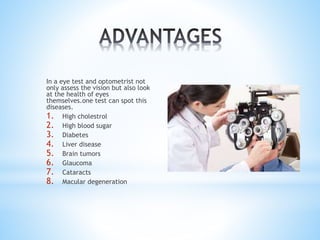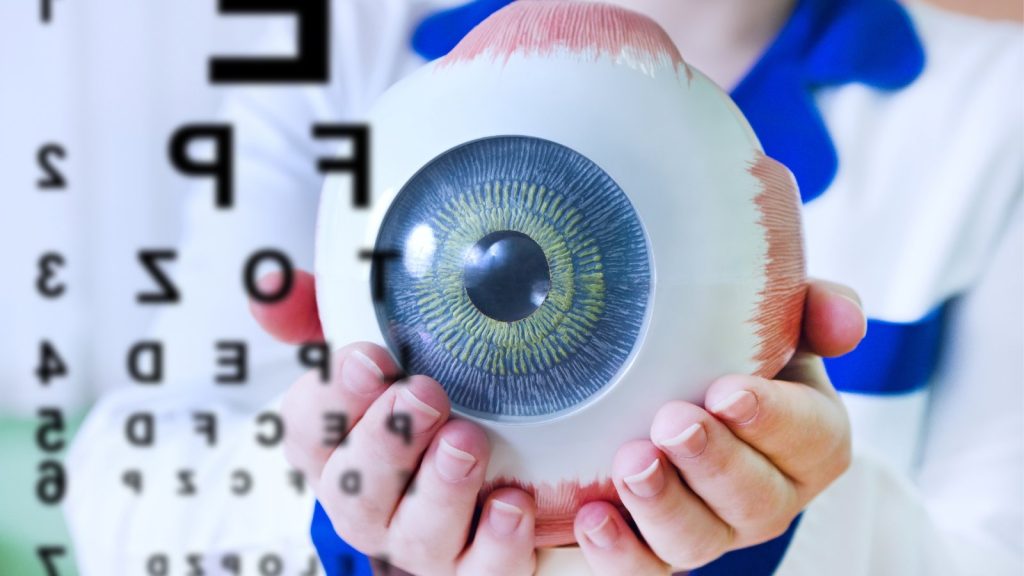The Function of Advanced Diagnostic Equipment in Identifying Eye Disorders
In the realm of ophthalmology, the usage of innovative diagnostic devices has revolutionized the very early identification and monitoring of different eye disorders. As the demand for precise and prompt medical diagnoses continues to expand, the combination of sophisticated devices like optical coherence tomography and aesthetic area testing has actually come to be indispensable in the world of eye treatment.
Significance of Early Diagnosis
Very early diagnosis plays a pivotal duty in the efficient management and treatment of eye disorders. By detecting eye disorders at an early stage, health care carriers can provide proper therapy strategies tailored to the specific problem, eventually leading to better outcomes for clients.

Technology for Finding Glaucoma
Sophisticated diagnostic modern technologies play a critical function in the early discovery and monitoring of glaucoma, a leading reason for permanent loss of sight worldwide. One such technology is optical comprehensibility tomography (OCT), which gives in-depth cross-sectional photos of the retina, enabling the dimension of retinal nerve fiber layer thickness. This measurement is essential in examining damage brought on by glaucoma. One more advanced device is aesthetic field testing, which maps the sensitivity of a patient's visual area, assisting to spot any type of locations of vision loss characteristic of glaucoma. Additionally, tonometry is utilized to determine intraocular pressure, a major threat factor for glaucoma. This test is crucial as elevated intraocular stress can lead to optic nerve damages. Newer modern technologies like the usage of artificial intelligence formulas in analyzing imaging data are showing appealing results in the early discovery of glaucoma. These innovative diagnostic devices enable ophthalmologists to detect glaucoma in its onset, enabling prompt intervention and much better monitoring of the disease to see avoid vision loss.
Role of Optical Coherence Tomography

OCT's ability to quantify retinal nerve fiber layer thickness permits for accurate and unbiased dimensions, helping in the very early discovery of glaucoma even prior to visual area issues become noticeable. On the whole, OCT plays an important role in enhancing the analysis precision and monitoring of glaucoma, ultimately adding to better results for people at threat of vision loss.
Enhancing Medical Diagnosis With Visual Area Testing
A vital element in thorough ophthalmic assessments, visual field home testing plays a pivotal duty in improving the diagnostic procedure for numerous eye disorders. By examining the full extent of an individual's aesthetic field, this examination supplies crucial details concerning the functional honesty of the whole visual path, from the retina to the aesthetic cortex.
Visual area screening is particularly beneficial in the diagnosis and monitoring of conditions such as glaucoma, optic nerve conditions, and different neurological conditions that can affect vision. With quantitative measurements of outer and main vision, medical professionals can discover subtle adjustments that may show the existence or development of these disorders, even before obvious signs occur.
Additionally, visual area testing enables for the tracking of therapy efficacy, aiding ophthalmologists tailor restorative treatments to private people. eyecare near me. By tracking adjustments in aesthetic field performance over time, doctor can make educated choices concerning adjusting medications, advising medical interventions, or carrying out other suitable steps to maintain or boost a client's visual feature
Taking Care Of Macular Degeneration

Conclusion
In conclusion, advanced analysis devices play a crucial duty in determining eye conditions early on. Technologies such as Optical Coherence Tomography and aesthetic area screening have greatly improved the accuracy and performance of diagnosing conditions like glaucoma and macular deterioration.